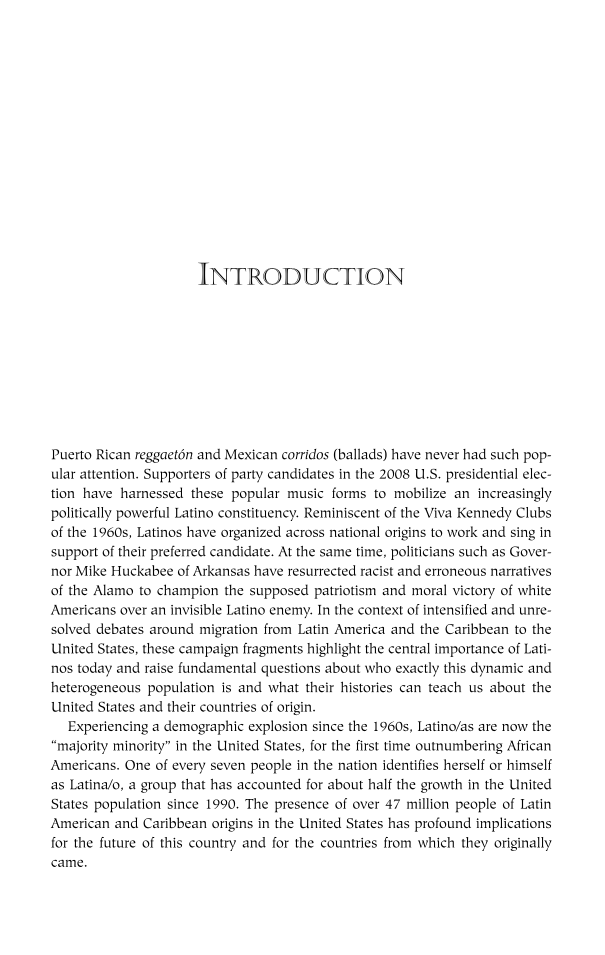Puerto Rican reggaetón and Mexican corridos (ballads) have never had such pop- ular attention. Supporters of party candidates in the 2008 U.S. presidential elec- tion have harnessed these popular music forms to mobilize an increasingly politically powerful Latino constituency. Reminiscent of the Viva Kennedy Clubs of the 1960s, Latinos have organized across national origins to work and sing in support of their preferred candidate. At the same time, politicians such as Gover- nor Mike Huckabee of Arkansas have resurrected racist and erroneous narratives of the Alamo to champion the supposed patriotism and moral victory of white Americans over an invisible Latino enemy. In the context of intensified and unre- solved debates around migration from Latin America and the Caribbean to the United States, these campaign fragments highlight the central importance of Lati- nos today and raise fundamental questions about who exactly this dynamic and heterogeneous population is and what their histories can teach us about the United States and their countries of origin. Experiencing a demographic explosion since the 1960s, Latino/as are now the “majority minority” in the United States, for the first time outnumbering African Americans. One of every seven people in the nation identifies herself or himself as Latina/o, a group that has accounted for about half the growth in the United States population since 1990. The presence of over 47 million people of Latin American and Caribbean origins in the United States has profound implications for the future of this country and for the countries from which they originally came. INTRODUCTION
Document Details My Account Print multiple pages
Print
You have printed 0 times in the last 24 hours.
Your print count will reset on at .
You may print 0 more time(s) before then.
You may print a maximum of 0 pages at a time.






























































































































































































































































































































































































































































































































































































































































































































































































































































































































































































































